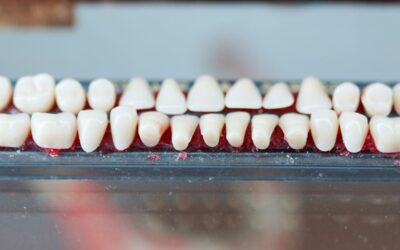What Are the Different Types of Teeth Called?
What Are the Different Types of Teeth Called?
Your teeth are one of the strongest parts of your body. They’re made from proteins such as collagen, and minerals such as calcium. In addition to helping you chew through even the toughest foods, they also help you speak clearly.
Most adults have 32 teeth, called permanent or secondary teeth:
- 8 incisors
- 4 canines, also called cuspids
- 8 premolars, also called bicuspid
- 12 molars, including 4 wisdom teeth
Children have just 20 teeth, called primary, temporary, or milk teeth. They include the same 10 teeth in the upper and lower jaw:
- 4 incisors
- 2 canines
- 4 molars
Primary teeth start to erupt through the gums when a baby is about 6 months old. The lower incisors are usually the first primary teeth to come in. Most kids have all 20 of their primary teeth by age 3.
Children tend to lose their primary teeth between the ages of 6 and 12. They’re then replaced by permanent teeth. Molars are usually the first permanent teeth to come in. Most people have all of their permanent teeth in place by age 21.
Keep reading to learn more about the different types of teeth, including their shape and function.
What are incisors?
Your eight incisor teeth are located in the front part of your mouth. You have four of them in your upper jaw and four in your lower jaw.
Incisors are shaped like small chisels. They have sharp edges that help you bite into food. Whenever you sink your teeth into something, such as an apple, you use your incisor teeth.
Incisors are usually the first set of teeth to erupt, appearing at about 6 months old. The adult set grows in between the ages of 6 and 8.
What are canines?
Your four canine teeth sit next to the incisors. You have two canines on the top of your mouth and two on the bottom.
Canines have a sharp, pointy surface for tearing food.
The first baby canines come in between the ages of 16 months and 20 months. The upper canines grow in first, followed by the lower canines.
Lower adult canines emerge in the opposite way. First, the lower canines poke through the gums around age 9, then the upper canines come in at age 11 or 12.
What are premolars?
Your eight premolars sit next to your canines. There are four premolars on top, and four on the bottom.
Premolars are bigger than canines and incisors. They have a flat surface with ridges for crushing and grinding food into smaller pieces to make it easier to swallow.
Baby molar teeth are replaced by adult premolars. Infants and young children don’t have premolars because these teeth don’t start to come in until around age 10.
What are molars?
Your 12 molars are your biggest and strongest teeth. You have six on the top and six on the bottom. The main eight molars are sometimes divided into your 6-year and 12-year molars, based on when they typically grow in.
The large surface area of your molars helps them grind up food. When you eat, your tongue pushes food to the back of your mouth. Then, your molars break up the food into pieces small enough for you to swallow.
The molars include four wisdom teeth, which are the last set of teeth to come in. They usually come in between the ages of 17 and 25. Wisdom teeth are also called third molars.
Not everyone has enough room in their mouth for this last group of teeth. Sometimes, the wisdom teeth are impacted, meaning they’re stuck under the gums. This means they don’t have space to grow in. If you don’t have room for your wisdom teeth, you’ll likely have to have them removed.
The bottom line
Your 32 teeth are essential for biting and grinding up food. You also need your teeth to help you speak clearly. While your teeth are solidly built, they won’t last a lifetime unless you take good care of them.
To keep your teeth in good shape, floss and brush regularly, and follow up with professional dental cleanings every six months.
Note: All content and media on the Bacchus Marsh Dental House website and social media channels are created and published online for informational purposes only. It is not intended to be a substitute for professional medical advice and should not be relied on as health or personal advice.
Services Mentioned
More Dental Articles
Something Stuck In Your Teeth? It’s The Past And The Future
The porosity of teeth and bones holds blood, sweat and tears and they’re the kind of stories we like to hear about ourselves ... Were you ever lucky enough to have simultaneously channelled Henry Steele Commager through a jangle of accidents, blunders, surprises and...
Scrape The Vape Dreamscape, Increased Cavities Is The Unclouded Gravity
Misinformation, conflicting information, outdated information and largely unverifiable information abounds in the realm of vaping. So much so, it makes you wonder what the deal is in navigating an effective way to a futile addiction. You don’t have to have a medical...
Red Wine Teeth Stains: Ageing (Dis)Gracefully
Red red wine You make me feel so fine You keep me rocking all of the time Red red wine … Most likely it’s the 1983 UB40 cover of songwriter Neil Diamond’s ‘Red Red Wine’ that comes to mind, reading those lyrics. It was their first number one UK hit that year; its 1988...
Mouth Wash: What’s In It & Does It Really Help?
Manufacturers produce a veritable ocean tanker full of mouth washes for our gargling pleasure. These bottles of brightly colour liquids are stacked up on pharmacy and supermarket shelves like an installation awaiting a light show. There are green, blue, purple, and...
















